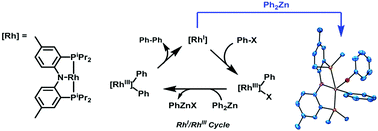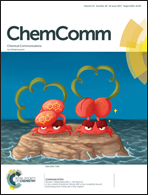Formation of (PNP)Rh complexes containing covalent rhodium–zinc bonds in studies of potential Rh-catalysed Negishi coupling†
Abstract
While investigating rhodium-catalyzed Negishi coupling, it was observed that the (PNP)Rh fragment readily inserted into zinc–carbon bonds to form isolable molecules with covalent rhodium–zinc bonds.



 Please wait while we load your content...
Please wait while we load your content...